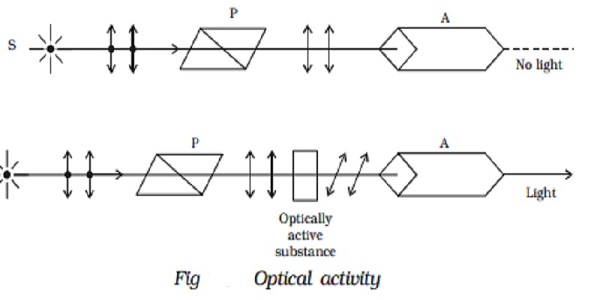FRESNEL THEORY OF OPTICAL ACTIVITY
The phenomenon of rotation of the plane of polarization of light traversing an isotropic optically active medium was first explained by Fresnel, near about 1820, by supposing that right and left-circularly polarised light propagate with different velocities in the medium.
When a Polarizer and an analyzer are crossed, no light comes out of the analyzer. When a quartz plane cut with its faces parallel to the optic axis is introduced between polarizer and analyzer in such a way that light falls normally on the quartz plate, then light comes out of polarizer and analyzer. It means that plane of vibration of the plane polarized light changes (rotate) when it passes through any substances. This property of rotating the plane of vibration by a substance is known as “Optical Activity”.

